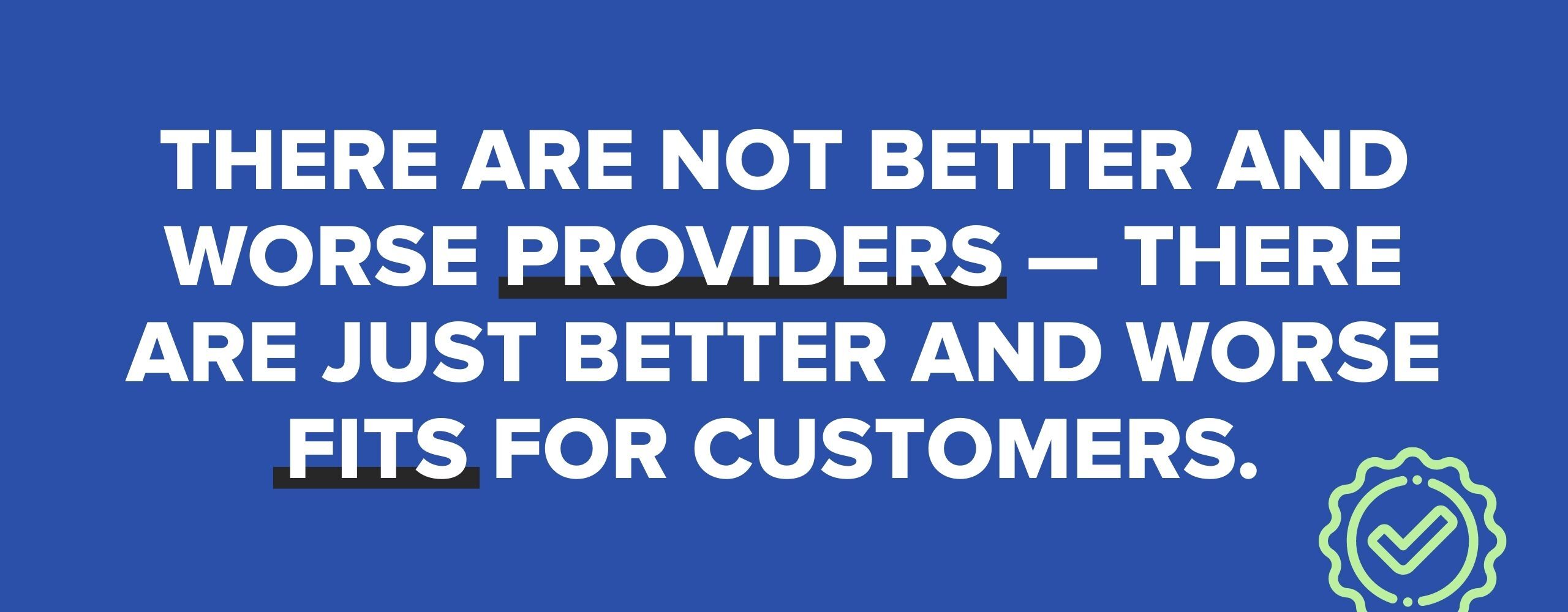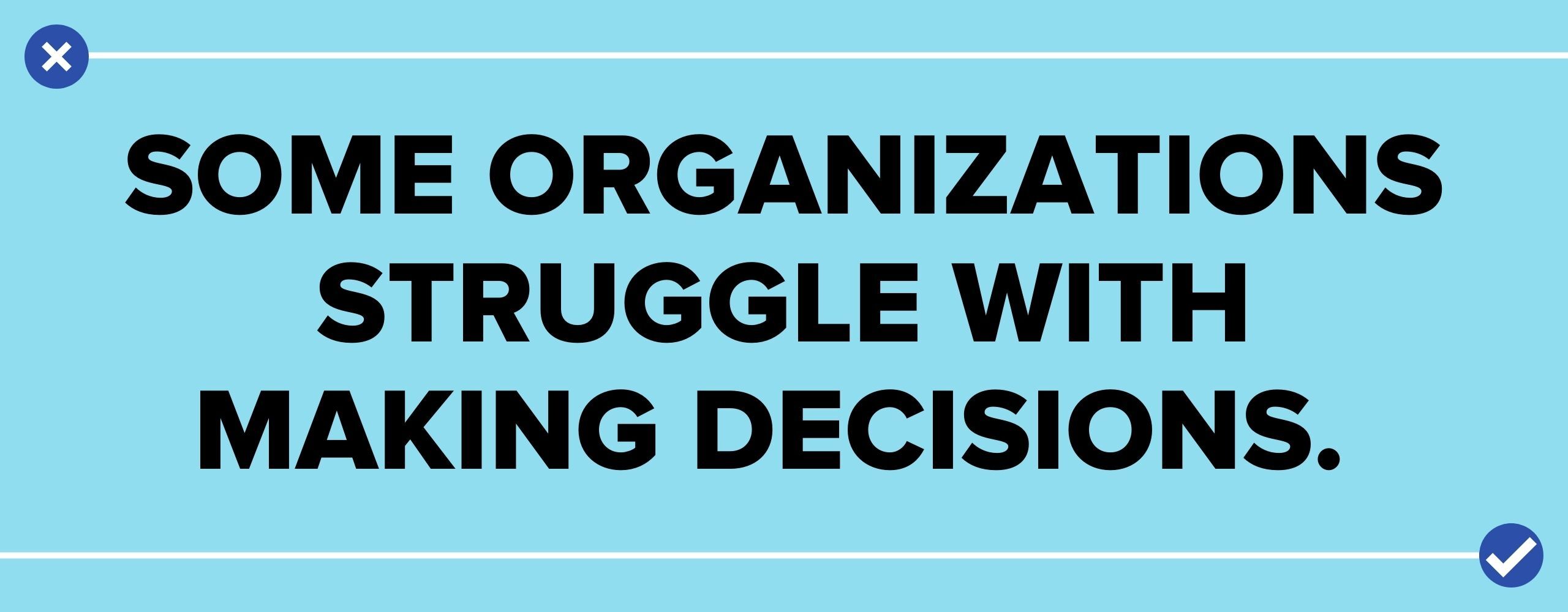Subscribe now and get the latest podcast releases delivered straight to your inbox.
What do you do with a prospect who ultimately doesn’t buy from you?
If you’re like most companies I work with, you go one of two routes.
- One, you do nothing. You mark the deal closed/lost in your CRM and move on to the next prospect.
- Or, two, you enroll them in an email nurture sequence hoping they consider you again in the future.
In either case, the process is pretty rote — and results in an enormous missed opportunity to learn where your sales and marketing practices could improve.

After all, who can better illuminate the flaws of your processes than someone who went through every stage of your buyer’s journey except the last one?
Businesses need to stop ignoring this golden opportunity.
They must build a formal process for following up with closed-lost deals and gleaning the information they can — all while not being pushy or overbearing.
Here’s how I teach my clients to go about this.
Create 2 closed/lost buckets: ‘Competition’ and ‘Inaction’
The first step is to differentiate your closed/lost prospects into two separate buckets:
- Buyers who chose to go with a competitor
- Buyers who chose not to buy from anyone
What you can learn from each is different, so let’s break down each one.
1. What you can learn from prospects who chose a competitor
Every time you see someone choose another business, it should teach you more about your own value proposition. (We will cover exactly how to conduct an exit interview with a close/lost lead in another article.)
Think about it like this: if a customer ultimately chooses to buy from someone else, it’s because that other option made more sense to them. I know that sounds obvious, but it’s a point worth focusing on.
In any given industry, I like to think that there are not better and worse providers — there are just better and worse fits for customers.

Option A might make sense for people who need flexibility. Option B is best for people with a tight budget. Option C is for people who want more hands-on service.
You get the idea.
If someone chose a different business, it was likely because their value prop better aligned with the buyer’s perceived needs.
Every time you’re selling to someone, you should get an even clearer idea of who you best serve. And every time you lose a deal, you should get an even clearer idea of who your competitors serve.
So, what do you do with this information?
Again, you have two options — and they’re not mutually exclusive.
- Niche down. Your first option is to get comfortable in your niche so you can win every deal that fits that demographic.
Let’s say you’re a boat manufacturer. If you know your option works best for novice weekenders, focus on winning every novice weekender you can.
Make sure your messaging speaks to their needs, make sure your content answers their questions, make sure your sales process moves at their pace. - Shoulder your way into the margins. Your second option is to try and carve out a little more room in the margins so you can win some deals adjacent to your niche.
If you specialize in flood insurance, you might begin to offer package deals to customers who need other kinds of insurance, too.
This way, you can strategically start to expand — as long as you don’t lose your core niche.
In either case, getting the information is the important part.
If you can learn more about why customers chose not to do business with you, you can develop an ever-evolving portrait of how you’re seen in the marketplace.

Then, it’s up to you whether you want to lean into the way the market already sees you or expand and try to increase your market share.
2. What you can learn from prospects who chose not to buy from anyone
I’ll admit, this one’s trickier. No one likes to lose a deal, but when a prospect chooses and competitor, I usually get it. Something about that competitor felt better.
But what about inaction?
What about when someone gets to the very end of your sales process and chooses to walk away?
You can only learn as much as the prospect is willing to tell you, and sometimes that’s not much. Sometimes, buyers can’t really articulate why they said no. Sometimes, they don’t want to.
The truth is, sometimes it’s your fault, and sometimes it’s not.
5 reasons you lost a deal to inaction
I find that most of the time when you lose a deal to inaction, it’s because of one of five reasons. I’ll break down each and explain proactive tactics that allow you to get ahead of similar situations in the future.
1. The buyer might just be indecisive
When we have a close/lost deal at IMPACT that’s made it through the entire sales process — only to balk at the last minute — I find myself thinking: Are you able to make decisions as a company?
And sure, there’s a little bit of frustration in there, but the sentiment is honest.
Some organizations struggle with making decisions.

They might not have the processes in place, or they might get bogged down in discussion, unable to reach a consensus. So, it might not be anything about your solution. It might be all about misalignment or dysfunction within their leadership team.
But that doesn’t mean you can’t counteract it.
How to solve it:
Build steps into your sales process that 1) bring in all stakeholders and decision-makers and 2) set clear outcomes for any given meeting.
If you get everyone into a room and make it clear that the meeting should end with a decision about whether or not you’ll be moving forward, you’ll eliminate the gray area.
2. The buyer isn’t a good ‘internal salesperson’
This is often related to decision making, too. If your buyer seems to be all-systems-go but then stalls on the final deal, it might be a communication problem.
In a B2B setting, your point of contact at the company becomes your internal salesperson for the other stakeholders. Maybe they were just a sub-par salesperson when it came to pitching the idea internally.
If you’re B2C, maybe the buyer did a bad job justifying the purchase to other involved family members.
How to solve it:
Don’t let the prospect sell it on their own! Provide videos, case studies, and buyer’s guides that they can share with other decision-makers so nothing gets lost in translation. The easier you can make the internal sales process, the more likely you are to close the deal.
3. Outside factors led to cold feet
Look, I get it. We live in a complex world and every buying decision is interlinked with a dozen others.
Often, indecision is due to outside factors beyond your control. If you’re B2B, maybe your buyer’s Q3 numbers just came back and they’re not as profitable as they thought. As a result, they’re going to limit spending. If you’re B2C, anything from inflation to a college tuition increase could cause a buyer to tighten their belt and not move forward.
How to solve it:
Keep these closed/lost prospects in your rotation. Ask if you can reach out again in six months. Be sure that your cancellation and refund policies help soothe anxieties about buying from you.
4. Your sales process went too fast (or too slow)
As my colleague Chris Duprey puts it, many businesses don’t actually understand the decisions a customer needs to make to buy from them.
As a result, organizations have an arbitrary sales process that either rushes prospects ahead before they’re ready or holds them back with unnecessary extra steps. Either extreme could alienate a buyer and kill a sale.
How to solve it:
Orient your sales process around buyer decision points so that you’re aligned with the buyer’s needs. Check in with your prospects to be sure you’re on the same page and addressing all of their questions.
5. The buyer doesn’t trust you
Trust is the common currency with which all businesses operate.
If your sales process didn’t build trust by addressing the fears, worries, and concerns your buyer had, then in the end, it might have been a gut feeling that held them back from going ahead and signing on the dotted line.
How to solve it:
Commit to utter transparency and honesty in your entire sales process.
Be clear about who is (and is not) a good fit to buy from you. Offer unbiased reviews of your products or services — and answer every single buyer question on your website so you make it clear you have nothing to hide. Be helpful at every turn.
The golden opportunity to improve your sales process
Many prospects who enter your sales process won’t buy from you. That’s just the way it is. Some will be disqualified, some will choose a competitor, some will just atrophy and choose to not move forward at all.
In any case, their experience can be invaluable for you to improve your sales process. Because ultimately, you want fewer people like them to enter in the future.
When you reach a point where it becomes clear that the prospect is not moving forward, don’t just ghost them and move on to the next deal.
Reach out and simply say, “Hey, we now both agree that you're not going to be working with us. Can I ask a couple of questions to make sure that you are on the same page?”
You may hear, “We’re going to go with Company X, but it was a really hard decision.” Or you may hear, “We’re just not ready to move forward right now.”
Make no mistake, these will be frustrating to hear. But it’s better than not knowing and just having to guess.
Every piece of data makes your business stronger.


Order Your Copy of Marcus Sheridan's New Book — Endless Customers!

